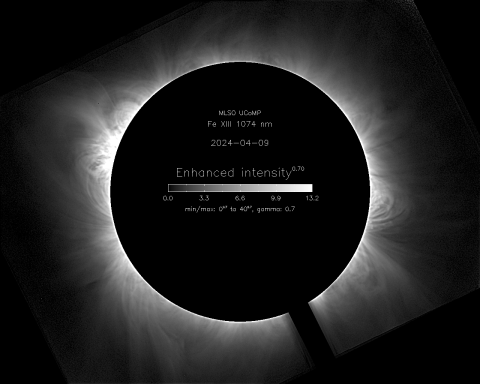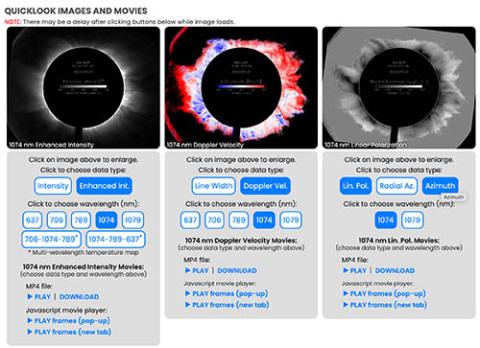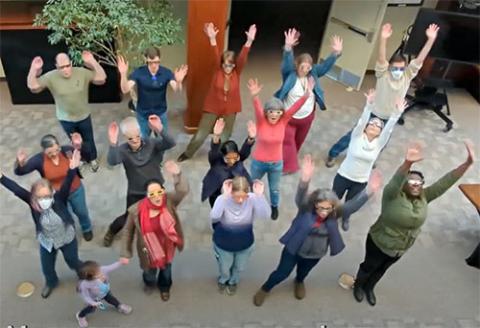
COSMO
The COronal Solar Magnetism Observatory (COSMO) offers the potential to transform our fundamental understanding of magnetic fields in the Sun’s atmosphere. These magnetic fields drive the formation of solar eruptions and other space weather events that can affect technologies, and therefore the lives and livelihoods of people, on Earth.
Investigating the source of solar storms
“Magnetism is the force that sends mass from the corona, the outermost part of the Sun’s atmosphere, flying across the solar system,” said Sarah Gibson, senior scientist at the U.S. National Science Foundation's National Center for Atmospheric Research (NSF NCAR). “However, there is a crucial gap in our understanding of these coronal mass ejections, or CMEs. We have very little information about the magnetic fields in the lower and middle solar atmosphere — and that’s where the storms brew.“

Composite image showing CME launching from left of Sun. View the movie of this CME.
NASA (AIA), NSF/NCAR/MLSO (K-Cor), NASA/ESA (LASCO)
CMEs can be very disruptive to life on Earth by interfering with power grids and satellite-based technologies including GPS, communications, and access to the internet. Understanding how and where CMEs develop will improve our ability to predict and prepare for solar storms, enhancing our ability to protect society. A CME can be seen as a large curve to the left of the Sun in this composite image of data taken on June 13, 2022, by (from center) SDO/AIA, MLSO/K-Cor, and SOHO/LASCO. COSMO will study the lower and middle solar atmospheres, represented here by the grayscale K-Cor image.
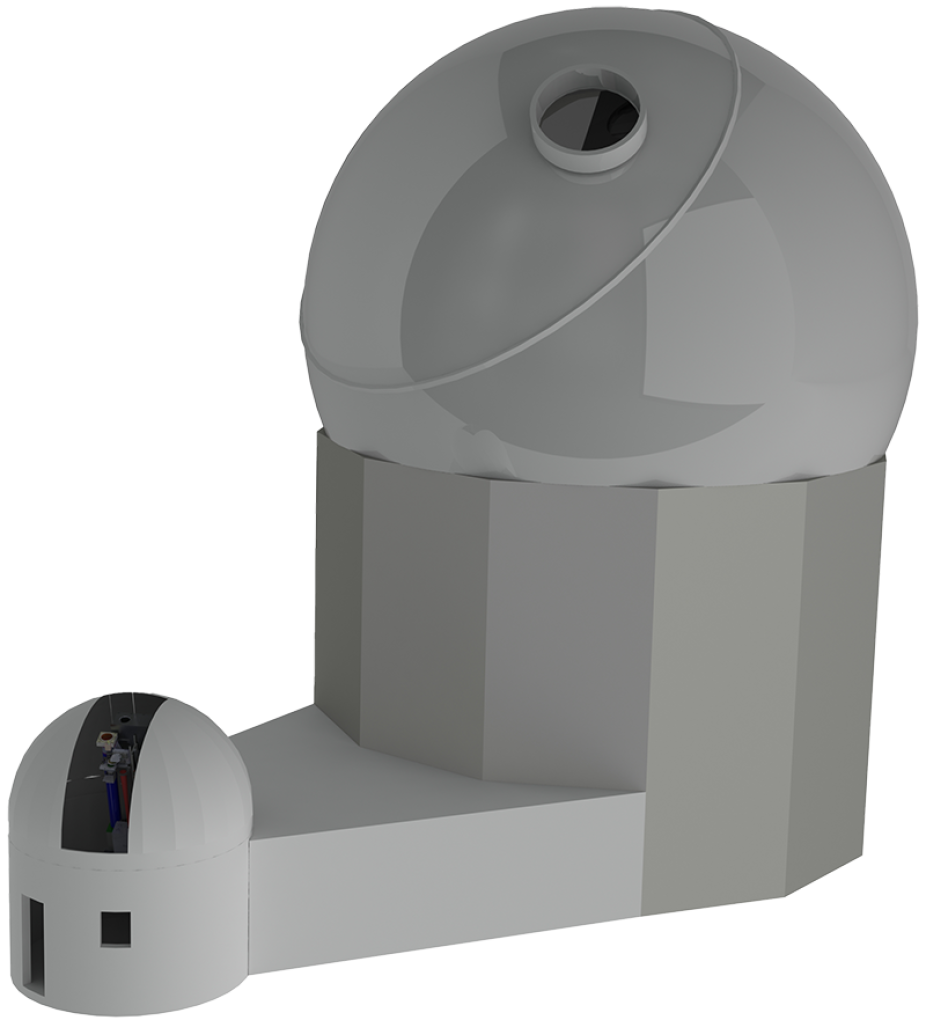
Computer rendering of the Coronal Solar Magnetism Observatory
NSF NCAR High Altitude Observatory--Andrew Carlile, and IG Group, EIE- Alessandro Lamberti
COSMO will be a suite of three instruments: the Large Coronagraph (COSMO‑LC), K‑Coronagraph (K-Cor), and the Chromospheric and prominence Magnetometer (ChroMag). No current instruments or suite of instruments in the U.S. or around the world study magnetic fields in the corona and catch the very beginning of a CME as COSMO will. The observatory will track energy buildup in the Sun’s magnetic field as well as changes in plasma conditions in the corona and the atmosphere just below the corona, which is called the chromosphere. These observations will be used to identify and track the physical processes that create solar storms and provide new information for space weather forecasting.
COSMO research data will be public, allowing scientists from universities, government agencies, and other organizations to access the information for their own research.
Protecting people and technology
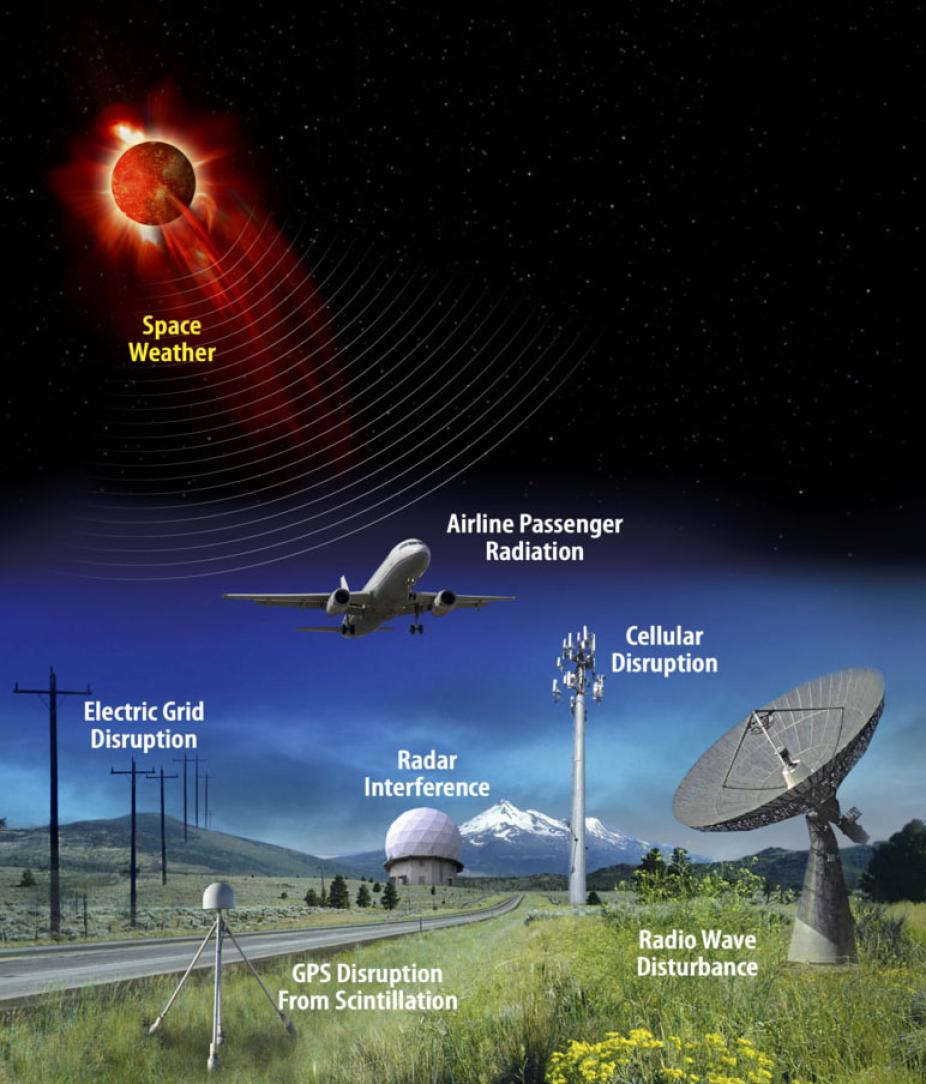
Possible effects on Earth of intense solar activity.
NASA Scientific Visualization
CMEs endanger people on Earth because of damage to essential infrastructure and technologies. These include:
- Power grids, with the potential for outages
- Radio communications
- GPS, which affects navigation, agriculture, search and rescue, financial services, and other systems
- Other satellite-based technologies, including intelligence, internet, and entertainment
Radiation associated with solar storms also increases risks to airplane crews, frequent fliers, and in-space astronauts.
Scientists observe CMEs but cannot predict when they will happen. Once the CMEs erupt, it’s difficult to forecast whether and how severely they will affect the Earth. This reduces opportunities to prepare for their impacts and protect society.
Better space weather prediction capabilities will help protect and preserve access to the power grid and other technologies that people and communities rely on.
Current status
NSF awarded a grant to NSF NCAR to complete the COSMO-LC design and survey prospective locations. The COSMO-LC has completed the Final Design Review, which ensures engineers and scientists are using the same criteria and assumptions to make design choices and increases the accuracy of cost estimates.
After assessing six potential sites, NSF NCAR has narrowed potential COSMO locations to the following locations:
- Magdalena Ridge Observatory, New Mexico
- Cerro Tololo Inter-American Observatory, Chile
- Teide Observatory (Izaña), Spain
NSF NCAR selected these sites based on scientific viability, including weather, sky brightness, and other considerations. The team is placing additional instruments at MRO and CTIO to evaluate whether and how atmospheric conditions would affect researchers’ ability to view and study the solar corona. NSF NCAR will continue working with communities at those three sites as data assessment continues. During this period, NSF NCAR will also refine cost data and other factors that will factor into the choice of a COSMO site.
NSF NCAR continues to monitor weather and the brightness of the sky at Barcroft Station, at White Mountain Research Center in California, and Observatorio Astronómico Félix Aguilar in Argentina. These two sites were evaluated during the initial COSMO location assessment. While they aren’t finalists for the observatory location, the data may be useful in the future, and NSF NCAR will make it publicly available.
